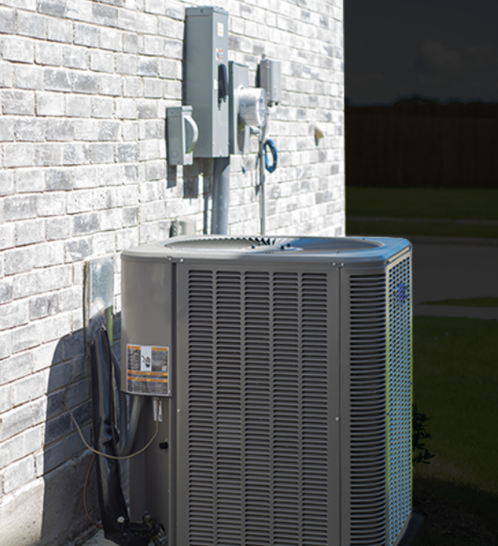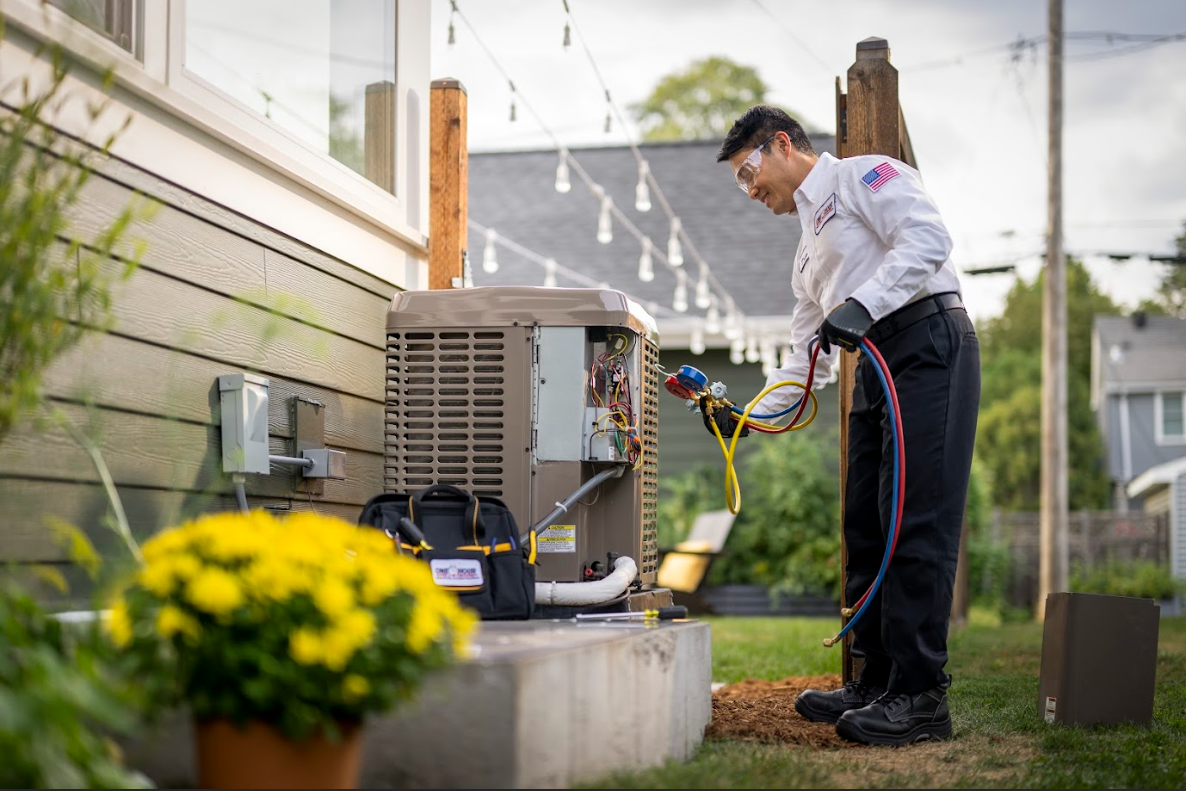
What makes a furnace efficient in cold climates
Ogden winters are dry, windy, and often below freezing at night. A furnace that stays efficient in that kind of cold has to move heat reliably, burn clean, and manage airflow and controls without wasting energy. Homeowners see the difference on gas bills, room-by-room comfort, and how often a furnace needs service. Here is what actually matters for cold-climate performance, based on what technicians see in Weber County homes every week.

AFUE is a starting point, not the finish line
Annual Fuel Utilization Efficiency (AFUE) tells how much of the fuel becomes usable heat across a season. An older furnace may sit around 80% AFUE. Many high-efficiency models reach 95–98% AFUE with sealed combustion and secondary heat exchangers. That rating matters in Ogden, where long heat cycles add up. Still, AFUE assumes steady lab conditions. Real homes have leaky ducts, dirty filters, and drafty doors. A 96% furnace paired with poor airflow can behave like an 85% system. Efficiency comes from the equipment and the way it breathes in the house.
Heat exchangers that hold their own in freezing weather
In deep cold, the heat exchanger is the workhorse. Stainless steel secondary exchangers reclaim latent heat from condensate in condensing furnaces, which is how high AFUE numbers happen. Thicker-gauge primaries resist thermal stress and cracking during long, high-fire runs. The shape of the exchanger affects how evenly flue gases contact the metal. A good design spreads the load, drains condensate cleanly, and avoids hot spots that cause early failure. In Ogden, where furnaces run hard during inversions and cold snaps, those details keep efficiency steady year after year.
Sealed combustion is safer and steadier
A sealed combustion furnace pulls air from outside and vents directly outdoors. This isolates the flame from indoor air and reduces backdraft risk during windy canyon gusts. It also prevents the furnace from using already-heated indoor air for combustion. That preserves heat in the living space and keeps burn conditions consistent, which improves both safety and fuel use.
Variable-speed blowers save energy and improve comfort
Fixed-speed blowers run loud and short-cycle. Variable-speed ECM motors use less electricity and move air at the rate the house needs. On mild days, the blower can run slower and longer, which provides even temperatures and better filtration. On cold nights near Ben Lomond or in East Bench areas, higher speed maintains airflow across the heat exchanger, preventing limit trips and improving heat transfer. Homeowners feel fewer swings and see fewer service calls for nuisance shutdowns.
Two-stage and modulating gas valves handle cold snaps
Single-stage furnaces run at full blast or off. Two-stage models offer low and high fire. Modulating units adjust in small increments across a wide range. In Ogden’s climate, that extra control matters. Low fire handles most daytime loads quietly, while high fire covers windy nights or when doors open and close often. By matching output to demand, the furnace avoids short cycles, keeps return air warmer, and extracts more heat from the fuel. That shows up as lower gas use and more stable room temperatures.
Tight ductwork and correct static pressure
Many efficiency losses occur after the furnace has done its job. Leaky return ducts in a cold basement pull in unconditioned air, chill the system, and make the furnace work harder. Crushed or undersized supply runs starve airflow and drop heat output. A static pressure test tells whether the blower can move air through the coil, filter, and ducts within the manufacturer’s limits. In older Ogden homes with additions, the fix may be simple: seal obvious leaks, add a return in a closed-off room, or replace a restrictive elbow. These small changes often recover more heat than a new thermostat ever will.
Filtration and airflow basics that keep efficiency intact
Filters prevent dust from coating the blower and heat exchanger. A clogged read more filter can take a high-efficiency furnace and make it behave like a low-end unit. Choose a filter that balances air quality and pressure drop. A typical MERV 8–11 pleated filter works for most homes. Higher MERV ratings can be fine with sufficient filter area and a strong blower, but the wrong combination can choke a system. If allergies are a concern, a media cabinet with a larger surface area is usually better than stacking dense filters.
Smart controls that avoid waste
A simple program can cut run time without sacrificing comfort. Outdoor reset controls are rare on furnaces but common on boilers. For furnaces, look for controls that manage blower ramping, dehumidification (useful during shoulder seasons), and staging logic. A thermostat that understands two-stage or modulating heat lets the system stay in low fire longer, which is where gas furnaces tend to be most efficient. Avoid aggressive setbacks in the coldest weeks; reheating a cold house can push a furnace into long high-fire runs, which can negate savings.
Venting and condensate done right
Condensing furnaces need proper vent length, slope, and termination. Wind across the Ogden bench can cause pressure fluctuations at the vent cap. Correct spacing and orientation reduce nuisance lockouts. Condensate must drain freely and stay warm enough to avoid freezing near exterior walls. Heat tape or a relocated trap can solve recurring winter backups. Poor drainage reduces heat extraction and can corrode components, which hurts efficiency and reliability.
Sizing for real loads, not guesses
Oversized furnaces short-cycle and create hot-and-cold spots. Undersized units run constantly and may never catch up during a cold front. A proper Manual J heat load, adjusted for Ogden’s design temperatures, insulation levels, and window quality, pays for itself. In many Weber County homes, a right-sized two-stage furnace beats an oversized single-stage every time. It runs longer at lower fire, extracts more heat, and keeps ducts warm without blasts of hot air.

Fuel type and local utility reality
Most Ogden homes run on natural gas, which is cost-effective in this market. High-efficiency gas furnaces usually beat electric resistance heat on operating cost. Heat pumps are improving and can pair well with gas in a dual-fuel setup. In very cold snaps, the gas furnace takes over for steady comfort. The best choice depends on rate structures, insulation levels, and whether adding a heat pump also adds summer cooling upgrades.
Maintenance that preserves efficiency all winter
Small tasks prevent big losses. A seasonal check catches weak igniters, dirty flame sensors, and declining draft performance before the first deep freeze. Technicians measure combustion, inspect heat exchangers, test safeties, verify static pressure, and confirm gas pressure at low and high fire. These steps keep the furnace running clean and safe while protecting efficiency.
Here is a short mid-winter checklist that fits Ogden conditions:
- Replace or clean the filter if it looks gray or shows visible dust streaks.
- Keep the outdoor intake and exhaust clear of snow, ice, and windblown debris.
- Listen for new blower noises or rattles after wind events.
- Check that supply registers are open and return grilles are not blocked by furniture.
- If rooms drift cool, note which ones and when; staging or duct fixes may solve it.
Real homes, real improvements
A Craftsman near 25th Street with an 80% furnace saw uneven heat and high bills. Sealing return leaks, adding a second return in the hallway, and installing a two-stage 96% unit with a variable-speed blower cut gas use by about 18% across the next winter. Comfort improved most during windy nights. Another case in West Haven involved a condensing furnace with recurring lockouts. The vent termination faced prevailing wind. Rotating the cap, correcting slope, and insulating the condensate line ended the problem and stabilized run cycles.
Signs the furnace is wasting energy
Homeowners usually notice longer run times, rising bills without a rate change, or rooms that never feel warm. Short bursts of hot air followed by long off times point to oversizing or airflow issues. Frequent cycling to high fire suggests poor staging control. Soot around the exhaust or a yellow, lazy flame calls for service. If any of these show up, a visit for furnace repair Ogden can diagnose issues before they turn into breakdowns.
Why choose a local pro who knows Ogden winters
A furnace that reads efficient on paper can still struggle on Harrison Boulevard or up near the benches where wind and cold hit hard. Local technicians understand how snow drifts block sidewall vents, how older basements pull in dirt-floor air, and which neighborhoods tend to have restrictive duct runs. That local pattern recognition speeds up fixes and helps set equipment for real conditions, not lab charts.
For fast, dependable furnace repair Ogden UT homeowners trust, One Hour Heating & Air Conditioning is ready. The team checks airflow, combustion, staging, and controls in one visit, and sets up a plan to keep the system steady through the coldest nights. Call to schedule service, request a second opinion, or book a pre-winter tune-up. Efficient heat in Ogden takes more than a good AFUE number — it takes the right setup, the right maintenance, and a crew that knows how this climate treats a furnace.
One Hour Heating & Air Conditioning provides trusted furnace repair in Ogden, UT and full-service HVAC solutions for homes and businesses. Family-owned and operated by Matt and Sarah McFarland, our company is built on honesty, hard work, and quality service—values passed down from Matt’s experience on McFarland Family Farms, known across Utah for its sweet corn. As part of a national network founded in 2002, we bring reliable heating and cooling care backed by professional training and local dedication.
Our licensed technicians handle furnace and AC installation, repair, and maintenance, heat pumps, ductless mini-splits, thermostat upgrades, air purification, indoor air quality testing, humidifiers, dehumidifiers, duct cleaning, zoning systems, and energy-efficient replacements. We stand by a 100% satisfaction guarantee through the UWIN® program and provide honest recommendations to help Ogden homeowners stay comfortable year-round.
Call today for dependable service that combines national standards with a personal, local touch.
One Hour Heating & Air Conditioning
1501 W 2650 S #103 Phone: (801) 405-9435 Website: https://www.onehourheatandair.com/ogden
Ogden,
UT
84401,
USA